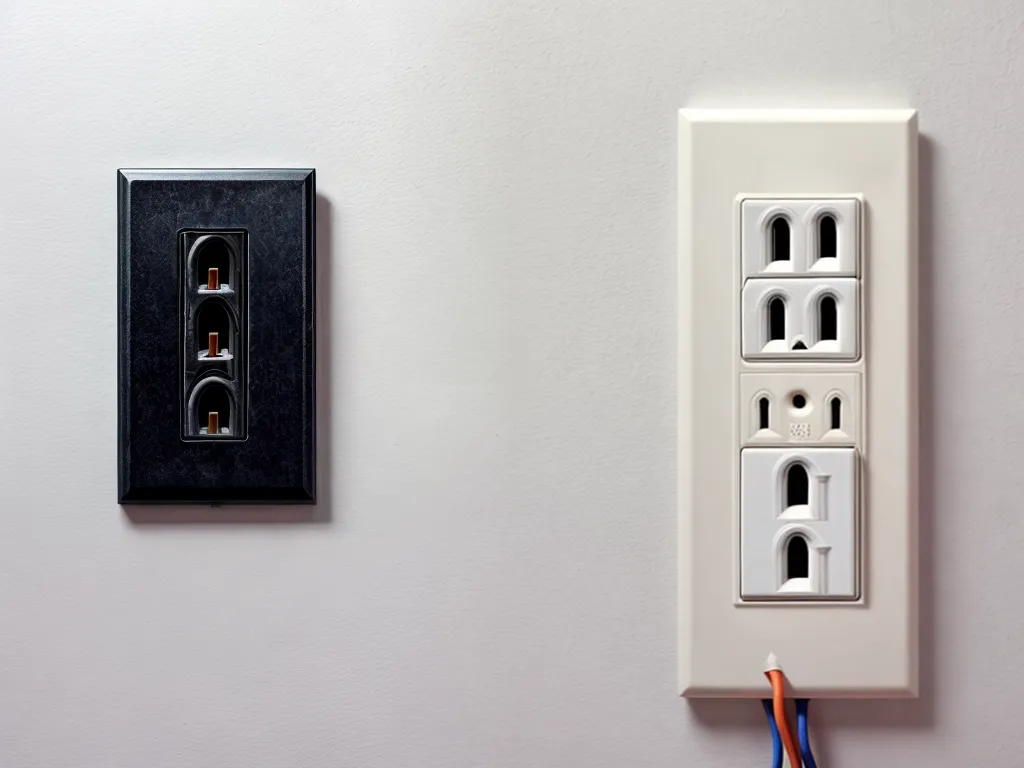
How to Wire a Switched Outlet
Introduction
Installing a switched outlet is a handy way to control lamps and other plug-in devices without having to walk over and turn them on and off manually. By connecting a switched outlet to an existing light switch, you can turn power on and off to the outlet simply by flipping the switch. Wiring a switched outlet is a basic electrical project that can be safely accomplished by homeowners with some basic DIY electrical knowledge and experience.
I will walk you through the complete process of wiring a switched outlet, from gathering the necessary materials to connecting the outlet and switch. By the end, you should feel confident to wire a switched outlet in your own home!
What You'll Need
Before getting started, make sure you have the following materials:
-
Electrical switch - Standard single-pole toggle switch.
-
Electrical outlet - Standard duplex receptacle outlet.
-
Voltage tester - To safely check for live wires.
-
Wire strippers - For stripping wire insulation.
-
Needle-nose pliers - For bending and cutting wires.
-
Screwdriver - Flathead for outlet and switch screws.
-
Electrical tape - For covering splices.
-
14/2 cable - 14 gauge, 2 conductor cable with ground. Length depends on your specific project.
-
Wire nuts - For joining wires together.
-
Electrical box - For enclosing the outlet and connections.
Turn Off Power
Before handling any wires, use a voltage tester to be absolutely certain the power is OFF to the circuit you'll be working on. Turn off the appropriate breaker in the main service panel. I always double-check wires with a non-contact voltage tester just to be safe. Working on live wires can result in severe injury or death by electrocution. So always confirm wires are dead!
Install Electrical Boxes
Mount new electrical boxes for the outlet and switch in the desired locations if boxes aren't already present. The outlet box should be mounted about 12 in. above floor level. The switch box goes on the wall near an existing light fixture controlled by the switch. Use caution when cutting drywall to avoid hitting any wires or pipes. Install boxes level and plumb with holes facing downward for proper installation.
Run Cable
Run 14/2 cable with ground from the switch box to the outlet box. Leave plenty of extra cable in the boxes, at least 6 to 8 in. This will make it easier to manipulate the wires for connections. Use cable clamps and staples to securely attach the cable every 1 to 2 ft. along the run.
I like to connect the outlet first when wiring a switched outlet. So I'll run the cable into the outlet box, leaving the end free in the switch box for now.
Connect Outlet Wires
With power still OFF, carefully strip about 3/4 in. of insulation from each wire using wire strippers. For a 14/2 cable, there will be:
- Black wire - Hot
- White wire - Neutral
- Bare wire - Ground
Carefully inspect wires as you strip to avoid nicking or cutting any strands.
Connect the wires to the hot and neutral screw terminals on the outlet. The bare copper wire connects to the green ground screw. Wrap wires clockwise around screws, tighten securely, and tug test each wire. Do NOT confuse the white Neutral wire for one of the Hot wires. This is critically important for safely wiring any outlet or switch.
Use needlenose pliers to gently bend the wires into the electrical box. Leave about 6 to 8 in. of extra wire in the box to allow slack for outlet installation.
Connect Switch Wires
Now go to the switch box. Leave enough bare wire to work with, then strip the insulation from each wire. We'll only be connecting the black and ground wires.
Connect the bare copper ground wire to the green ground screw on the switch. Connect the black wire to one of the hot screws, usually colored brass. The white neutral wire remains unused, so cap it off individually with a plastic wire nut to prevent contact with other wires.
Install Devices
With the wiring complete, carefully tuck wires into the boxes and install the outlet and switch into place. Hold them level and secure with long mounting screws. For the outlet, insert the top (hot) screw into the top hole, the bottom (neutral) screw into the bottom hole. The ground screw is on the green hex section. Take your time and ensure wires remain neatly tucked in as you mount the devices. Leaving wires jammed between the box and device can lead to shorts and shock hazards.
Test Operation
The moment of truth! Turn the power back on at the breaker box. Use a voltage tester or outlet tester to confirm proper wiring before plugging anything in. Turn the switch on and off to ensure it operates the outlet as intended. If the outlet is always hot regardless of switch position, you likely have a reversed wire connection. Turn off power immediately and double check for mistakes.
If everything checks out, you can install wallplates and decorative covers. Be sure to label the switch clearly for convenience. Congratulations, you've successfully installed a handy switched outlet! Take your time, exercise caution, and feel free to call an electrician if you're ever uncertain about tackling electrical work yourself. Proper wiring is critical for your safety. But with good information and care, wiring a basic switched outlet is totally DIY friendly.